Genre: Run-‘n-Gun Developer: SIMS Co. Publisher: Sega Ent. Players: 1 Released: 1992
I’ve always had a soft spot for Alien Syndrome. I remember playing the arcade original in Bally’s Aladdin’s Castle back in 1987. The machine had its volume turned up very loudly, and the soundtrack was nerve-wracking. There was a sense of tension and isolation that few games at the time could match, and it gave Alien Syndrome a special quality that made a great impression upon me.
Having played the Master System port (which I enjoyed, despite its unbalanced difficulty), I was overjoyed to discover that there was a Game Gear version. I, unfortunately, didn’t find out about it until only a few years ago, as it wasn’t released in the U.S., I recall seeing it in a few magazines during the ‘90s, but it was quickly forgotten since I never owned a Game Gear at the time. Then recently, I saw some video on YouTube and realized what I had missed. I was instantly convinced to find an import version. Truly my friends, the Game Gear’s lack of regional lockout is a great thing!
I was surprised to find that the portable Alien Syndrome is not a port but rather a sequel. It’s set half a decade after the original, and the aliens have returned to wreak havoc on humanity. Ricky and Mary are once again tasked with stopping the alien invasion and saving Earth. The Game Gear version allows players to choose from either character, but the game is sadly for only one person. That’s very unfortunate, giving how much fun it was to kick alien butt with a friend in the arcade version. Alien Syndrome could have made good use of the link cable, but instead, we’re stuck with a single-player affair. Isolation, indeed!
I played the Japanese version, and it is wonderful import goodness. From its Engrish intro (“an emergency massage”) to the great box art, it’s a game worth seeking out. I’m not too impressed with the bland cart label, but it’s what’s inside that counts. On that front, Alien Syndrome delivers on all fronts. On the Game Gear, Alien Syndrome plays much like its arcade and console brethren. Players run around ships in search of hostages, blasting aliens and collecting power-ups before the timer expires and the ship explodes. Once a certain amount of hostages are rescued, the door to the boss opens.
The portable version offers a few differences that, in my opinion, make it the best one Sega’s released outside of the original. First, instead of visiting space colonies, the whole game takes place aboard a single ship, the space transport Dagal. Each stage is a different section of the ship, and this new dynamic means that the levels are different from other versions, giving this one a unique feel. Just check out the faces in the walls in stage four! Also, there are new types of aliens, adding to some of the familiar forms that grace the console and arcade games. The variety seems a lot larger now, and it adds to the sensation of this game being a true sequel and not just an enhanced port. They all look colorful and detailed, and along with Alien Syndrome’s nice visuals, give this release a great aesthetic.
Perhaps the most notable changes come to the gameplay. The map can now (thankfully) be viewed at any time, and weapon power-ups can be stacked (flamethrower for life, yo!). Stackable weapons aren’t merely for looking cool, either. Depending on the level, a certain weapon is preferred. Fireballs can be upgraded to a homing weapon, the flamethrower obtains a longer reach and is very strong, and lasers can shoot multiple beams. These upgrades are helpful for fighting the new aliens, and they can also now blast through sealed doors to reach hostages. Some of the new level designs are maze-like, and it’s great not having to search for keys or anything of the sort. Find a closed door? Just blow that sucker open!
As I mentioned, the new levels can be large and very maze-like, so it takes a lot of exploration to find all the hostages. Thankfully, the music changes when players have enough to advance to the boss level, and it sounds great. In fact, I like the soundtrack to this Alien Syndrome quite a bit, especially the wonderful boss theme. SIMS did a great job of capturing the atmosphere of the original in all respects, and the Game Gear’s music is very well done. Playing with earphones is highly recommended.
While Alien Syndrome is great on the Game Gear, it’s not perfect. At only four stages, the game doesn’t take that long to play through. They’re intricate to a degree, but they’re not all that large. Some slowdown and flicker are present during gameplay, though they don’t hinder things too much. Additionally, some of the stages can be frustrating to navigate, and the map isn’t always so easy to read. The stages can also be pretty hard, though the difficulty level is not as bad as in the Master System port. In contrast, the boss battles can be a cakewalk with the right weapon (no, I’m not telling which one). Perhaps the biggest knock against this version is the lack of a two-player feature. This game shined when played with a friend, and not having the option here is lamentable. The game is fun enough when played alone, but sequels should add features, not take them away.
Overall, Alien Syndrome on the Game Gear is a quality release that should be in the library of anyone with the system. It’s also exclusive to Sega’s portable, if I’m not mistaken. SIMS retained the charm and gameplay of the arcade original while simultaneously injecting some new features in a way that will please both fans of the series and newcomers alike. The game is moderately priced and can be played on any Game Gear, so find a copy and save some hostages. Ricky and Mary can use the help!
Score: 8 out of 10

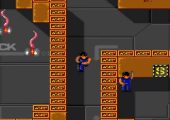
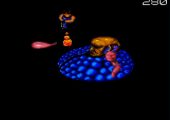
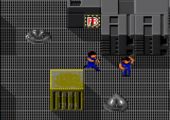
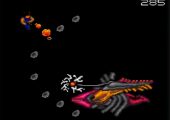
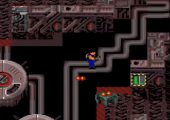
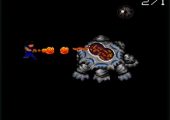

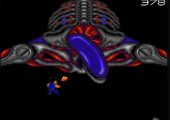

Recent Comments